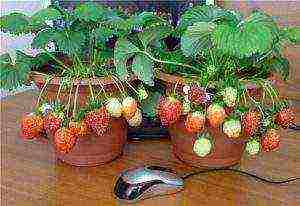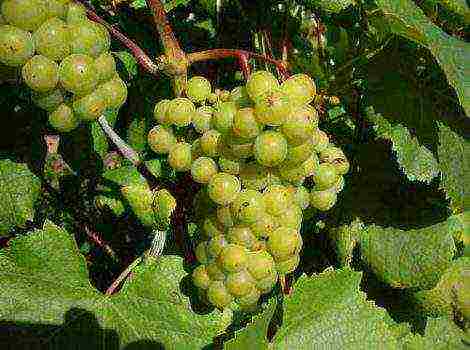Content
Chrysanthemums are desirable flowers in any garden. There are several reasons for this. The main one is that they bloom late, at a time when there are practically no other flowers in nature. Thanks to chrysanthemums, the autumn garden will look fun and beautiful. Because of this, growing chrysanthemums at home never ceases to be fashionable.
Another reason many people plant chrysanthemums is their simplicity. Yes, there are certain rules for caring for a flower, but they are not so extensive and significant. In most cases, chrysanthemums take root well, grow and bloom profusely. In this article, we will look at the secrets of growing chrysanthemums at home, as well as ways to reproduce them.
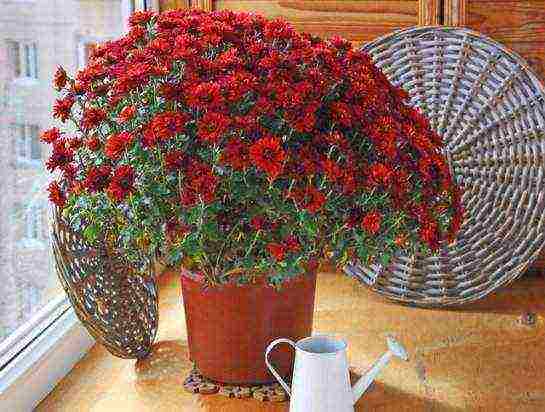
Chrysanthemums: care and cultivation
Can chrysanthemums be grown at home? Sure. It is not at all difficult to look after them. Growing chrysanthemums at home includes a set of seasonal measures. In the spring, the plant needs one care, in the fall, another. Correct fit is essential. After all, it is easier to adjust the irrigation or fertilization regime than to change the place where the chrysanthemum grows. Care and cultivation in the country requires special attention to this issue, because you are not always here, and, therefore, you cannot constantly control the situation. So, you need to be insured.
Correct fit
How to grow chrysanthemums at home? First, find a suitable place for the flower. It should be:
- accessible to sunlight and air;
- nutritious;
- moderately moist.
In order for the site to meet all these parameters, it must be at a certain elevation. In this case, the plant will be well illuminated by the sun. This will help the bush to form properly. If the sun is not enough, then the chrysanthemum begins to reach for it, growing too much. In this case, long stems will remain semi-feathery, and flowering will be rare. In some cases, these chrysanthemums do not bloom at all.
An elevated location is also favorable in terms of soil moisture. Excess water will simply flow down. This is important, as in too wet soil, the roots of the chrysanthemum begin to rot. Various pests can grow on the stems that love moisture. Shaded areas can exacerbate this problem. Fungus is especially worth wary of. It affects the bottom of the stems as well as the roots of the plant.

Chrysanthemums love soil that is rich in minerals and nutrients. In a soil poor in such elements, the flower will be weak, its stems will develop poorly, and the buds may not appear at all. Unlike the previous conditions, this problem can be dealt with. Just fertilize the soil before planting the plant and after the chrysanthemum has already taken root. To do this, apply nitrogen fertilization. You can throw some compost into the pit before planting.
Chrysanthemums are planted at a depth of 30-40 centimeters. It is not necessary to dig it deeply deeply, because the root system of the flower develops in width. If the flower grows large and is unstable, it is advisable to tie it up. The distance between chrysanthemums should be at least 40-50 centimeters.It is especially important to maintain a distance between the globular varieties of a given flower, as they need space to form a dome.
After planting, the plant needs to be shaded a little. Watering from the first days should be moderate.
When is the best time to plant chrysanthemums? It is better to start growing chrysanthemums at home with the spring planting of flowers. So you can take care of them until late autumn, adjusting the conditions of their maintenance. If you plant chrysanthemums in October or even later, then you cannot be sure of their rooting. And even if the flowers seem to you quite accepted, there will be no guarantee that they will overwinter.
Small decorative chrysanthemums are often planted in a flowerpot and kept as indoor.
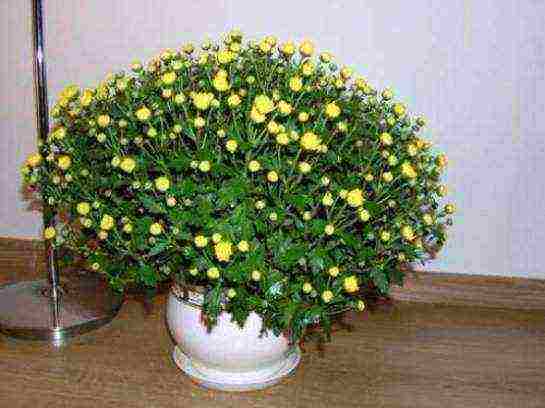
Watering
Chrysanthemums love moderate watering. With a lack of it, the stems will begin to wilt, and with an abundance, they will rot and become infected with a fungus. Experienced growers believe that sometimes it is better to underfill the chrysanthemum root than to pour too much. That is why these flowers are planted on a dais so that excess moisture can go down.
Make sure that there are no depressions or pits near the chrysanthemum. After rains, water can be retained in them, which will negatively affect the condition of the plant.
Some growers recommend spraying chrysanthemums with Fitosporin or another antifungal agent after each rain.
How to fertilize the soil for a chrysanthemum
Growing chrysanthemums in the country or at home must necessarily include the introduction of fertilizing. Since the flower needs an increased amount of nutrients, it is necessary to fertilize the soil near it, starting in spring. At the end of March-beginning of April, it is already possible to make nitrogen fertilizing. You can buy them in the store or make your own using a mullein. These types of fertilizers stimulate the growth of flowers. In spring and summer, when chrysanthemum bushes are just forming, this is just the way.
From the end of August, it is already necessary to apply potash and phosphate fertilizers. You can buy a combination remedy that includes them. These types of fertilizers promote bud growth and abundant flowering. The plant also needs them to accumulate resources for wintering.
Since the end of October, the chrysanthemum does not need any fertilizers. At this time, she is in the period of her abundant flowering. In November, you can already start preparing for the winter.
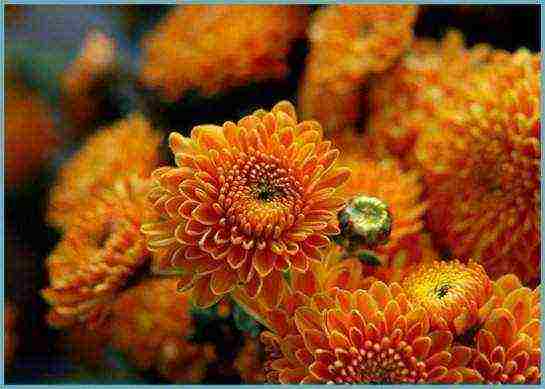
Pruning
Chrysanthemums should be pruned twice a year. In spring and summer, this is done in order to form a beautiful bush. In particular, the growing point on the top is removed from the plant. After that, lateral shoots begin to actively grow, and the chrysanthemum becomes lush. It is necessary to cut off the top a few days after planting the flower, then the procedure is repeated after 20 days.
If you have a spherical chrysanthemum, then you do not need to pinch it. She will already grow as a lush bush in the shape of a dome. This is due to its varietal properties.
It is also necessary to prune the chrysanthemum in the fall. First of all, at this time, diseased, dry and rotten shoots are removed. This is done for sanitary purposes so that the entire bush does not become infected in winter. Some growers also shorten all other shoots. But this should not always be done. The need for full pruning arises if you are going to cover the plant for the winter outdoors. In this case, you need to reduce the bush in volume so that it fits under the insulation frame. If you do not apply special measures for covering, then it is better not to cut off the top of the chrysanthemum. This can harm the plant.
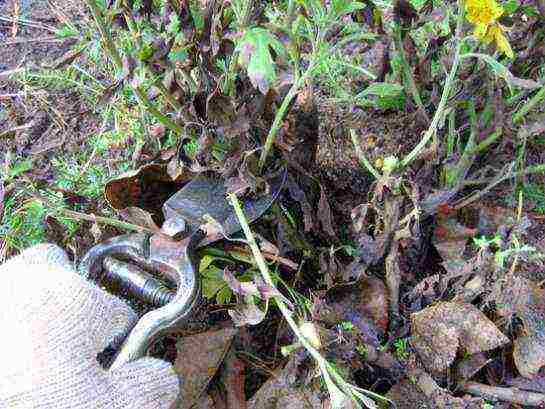
Treatment
Chrysanthemums, like any other flowers, can be susceptible to diseases and also be attacked by pests. In such situations, it is important to take timely measures so that the infection does not kill the chrysanthemums and does not spread to neighboring flowers.
If the chrysanthemum is affected by a fungus, then spray it with Fitosporin or another similar preparation.Also, make sure that the moisture level is reduced in the area with flowers.
Powdery mildew sometimes appears on chrysanthemum. It is clearly visible on the affected leaves. It is necessary to deal with it by introducing potassium-phosphorus fertilizing, as well as reducing the level of moisture. Also, make sure that no water gets on the leaves when watering.
Chrysanthemum is also affected by ticks. They are neutralized with insecticides, which are sold in flower shops. The most effective is Karbofos.
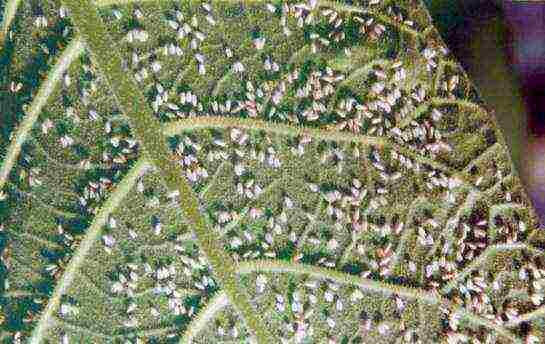
Preparing for winter
Care and cultivation of chrysanthemums in the country includes such a stage as preparation for wintering. It should start in September, when the plant is just getting ready to bloom. At this time, it is already necessary to apply potassium-phosphorus fertilizers. They will give the plant strength for wintering.
In November, when the leaves of the chrysanthemum begin to wither, it is worth thinking about hiding it for the winter. After sanitary pruning, you will need to build a frame over the plant, and then cover it with polyethylene or other insulating material. These measures will be sufficient for the wintering of a common chrysanthemum. But if your flower is not a frost-resistant variety, then it is better to dig it up by the roots and store it in the cellar until spring.
When implementing the care and cultivation of chrysanthemums in the country, remember that in the winter you will not be able to look after it. Therefore, it is better to put it in the cellar. So you can be sure that it will not freeze and will not stick.
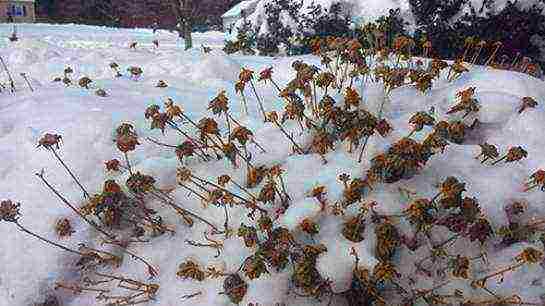
Reproduction
How to grow a chrysanthemum, it became clear to you from the previous sections of this article. But surely this information is not enough for amateur flower growers, but I would like not only to have a chrysanthemum on my site, but also to propagate it to several bushes. This can be done in several ways.
Cuttings
To reproduce in this way, you need a strong and healthy chrysanthemum branch. It is easy to choose it, since the condition can be judged by its appearance. A flower from a bouquet is also suitable for cuttings.
In order for the branch to take root, it must be sprinkled with a root former and planted in moist soil. At the same time, make sure that the earth does not dry out until the plant is well rooted. You can also put the cutting in a glass of water to take root in it. After that, the plant is planted in a flowerpot or open ground.
Separation of the rhizome
This method of breeding chrysanthemums is the simplest. You just need to dig out part of an already formed flower bush and transplant it separately. This is not difficult.
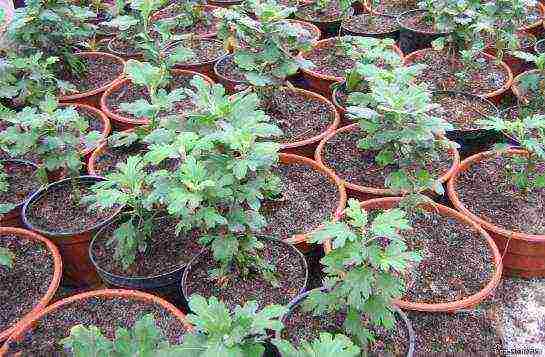
Reproduction through seeds
Can chrysanthemums be grown from seeds? This method is indeed sometimes used. True, it is not suitable for spherical chrysanthemums, because they are artificially bred. If you plant the seeds of Multiflora, then an ordinary chrysanthemum will grow without a hint of varietal characteristics.
Growing chrysanthemums from seeds at home can be carried out in seedlings. For this, a suitable box is selected and a loose, fertile earthen mixture is poured into it. Do not forget about high-quality drainage. After that, chrysanthemum seeds are planted at a depth of 25 centimeters. It is advisable to put 2-3 seeds in one hole. After the seedlings sprout and grow a little, it must be thinned out. You can also picket plants in separate disposable cups.
Chrysanthemum seedlings are planted in mid-February - early March. By May, the plants will be ready to be transplanted outside.
How to grow chrysanthemum seeds outdoors? To do this, they should be planted in early May in well-moistened soil. Thereafter, the flowers are often watered until germination. When the chrysanthemums sprout, they are thinned out. We hope that our article has answered the question: how to grow chrysanthemums at home. See also the video "Growing chrysanthemums at home."
Grow chrysanthemum at home
Chrysanthemums are very beautiful flowers, varied in flower structure and shades, which can decorate any room with beautiful round-shaped bushes.It should be noted that chrysanthemums live well at home, while not giving their owners much trouble in terms of content. You can put a pretty bush anywhere, be it a wide enough window sill, a balcony floor, or even a sufficiently lit room. If we talk about a country house, who will beautifully furnish the veranda and the entrance to the house with them, because they are not whimsical to warmth, they can perfectly tolerate a drop in temperature. The only problem will be excessively warm air, because these flowers do not like it when the room is warm, that is, above 20 degrees Celsius and when there is no regular ventilation.
Chrysanthemum species
This flower migrated to our apartments from Asia, where in translation from the local language it literally means "sunny plant". This is not surprising, just looking at the chrysanthemums, the photo is immediately associated with the yellowness of the sun. At home, it was divided into four main types, each of which is endowed with its own characteristics. The first type is Shrub, it quite looks like a chamomile, but only the flowers are larger and, accordingly, different shades. Often used in flower arrangements.
Planting chrysanthemums and their reproduction
True, it will not work to tell fortunes on her about whether she loves or not. The second type includes the Cascade, which looks like a tiny daisy. Accordingly, this flower is taller and larger. For those who grow flowers in the garden, the favorite was the one that was later called Sadovaya. She is very high, sometimes up to 70 centimeters. But on average, a plant is usually 40-50 centimeters, no more. Another type is Korean, which by its peculiarity has resistance to low temperatures. It blooms until frost. This can decorate any garden, because only she and even Hellebore did not dry out at this time. However, chrysanthemums at home look no less beautiful.
to the content ^ Features of cultivation
Growing chrysanthemums is absolutely not difficult, no matter what kind they are. In a closed room, in a pot, any chrysanthemum feels pretty good, it is not whimsical. But if there is an opportunity to place such a bush on the veranda or at least on the balcony, it will be great, because the flowers love coolness. Draft will not be a hindrance either, rather the opposite, because chrysanthemums love fresh air.
How to grow chrysanthemums on your street
If it is hot, stuffy in the room or even on the balcony, then the chrysanthemum will wither right before our eyes. At first, this will manifest itself in the fact that all the flowers will close and then fall off, then they will begin to lose elasticity, the leaves will fall and fall. Soon there will be only dry branches. Moreover, this happens in just a week, that is, quite quickly. Needless to say, chrysanthemum does not require care, but compliance with the temperature regime is mandatory. These flowers love light. But we are not talking about direct sunlight, which can simply burn the buds and cause burn spots to flowers, but simply about indirect, but sufficiently intense lighting. If brown dots or even spots appear on the leaves of the bush, you should immediately remove the plant from this place, this is a manifestation of sunburn. Although, if the sun is lacking, the flower will stretch upward, losing its rounded shape, and its buds will be very small and, in the end, will not open.
Chrysanthemum care
If we talk about watering, then watering the bush with a moderate amount of water twice a week will be enough. Chrysanthemums do not like damp soil and are more likely to suffer a lack of water than an excess of it. This applies to both garden and home forms. By the way, they are planted in compact pots, on the bottom of which drainage must be placed in the form of gravel or other types of small stone. And the holes in the bottom of the pot should be large enough so that excess water doesn't stagnate.Spraying chrysanthemums at home is also necessary, as a rule, in the summer this is done twice a day, that is, in the morning and in the evening.
back to contents ^ Formation of the appearance of chrysanthemum
Many flower lovers like chrysanthemums that both the shape and degree of roundness of the bush and the size of the flowers themselves can be formed independently. In their own way, both individual large flowers and small ones, even small ones, but in the plural, are beautiful.
Shape Hizanem Growth View
So, first you need to choose a pot that is large enough. Not tall, but wide, as required by the shape of the root system. Since chrysanthemum prefers not particularly intrusive care, it is a rather independent plant, then no additional painstaking work is needed. No greenhouses and no shelter. True, when the bush is already old enough, you need to see if its branching suits you. If not, the top is cut off, then the dock branches begin to develop more quickly, additional shoots appear. But this must be done until the buds begin to appear, otherwise the plant will not bloom.
View of a formed chrysanthemum and its flower
If the flowers themselves seem small, you need to cut off a certain part of them. That is, if you want to double the size, then cut off half. But do it again, at the very beginning of the formation of buds. Experienced flower growers, even when the bud is the size of a pea, can roughly name the size of the future chrysanthemum flower. But since the flower, as a rule, does not have long petals, it is three times the diameter of its bud.
back to contents ^ Diseases of chrysanthemums
As a rule, at home, however, as well as in the street, these plants do not get sick with anything very serious. Most often they are affected by the spider mite, but it is easy to get rid of it with a soapy solution. You can also replace it with Piterium solution. You should not be afraid of any earth parasites. The aphids, which sometimes grow in the flowers themselves, do no harm and can simply be washed off with water.
Avoiding Chrysanthemum Disease - Transplant
In Europe, where wedding ceremonies take place mainly on the street, gazebos are decorated with flowers, not in the last place is chrysanthemum, videos of this nature can be easily found on the Internet. This proves once again the decorative properties of the plant.
back to content ^ Videos
 There are about thirty species of chrysanthemums in the world. Among them are annuals and perennials, which are most often found in Asia. These flowers belong to the Aster family. This variety of flowers was discovered a thousand years ago, and they came to European countries around the 17th century. Many species are grown outdoors and thrive there, but there are a number of varieties that are home grown. It is these colors that will be discussed in the article.
There are about thirty species of chrysanthemums in the world. Among them are annuals and perennials, which are most often found in Asia. These flowers belong to the Aster family. This variety of flowers was discovered a thousand years ago, and they came to European countries around the 17th century. Many species are grown outdoors and thrive there, but there are a number of varieties that are home grown. It is these colors that will be discussed in the article.
Description of the flower
 A home-grown chrysanthemum will not be large in size. This is due to the fact that gardeners use special preparations that control the process of its growth. But cases are not excluded when such a plant did not lag behind in size from an ordinary garden flower.
A home-grown chrysanthemum will not be large in size. This is due to the fact that gardeners use special preparations that control the process of its growth. But cases are not excluded when such a plant did not lag behind in size from an ordinary garden flower.
But in most cases, indoor chrysanthemums are low-growing varieties that have quite abundant flowering and reach a height of no more than seventy centimeters. The smallest flowers sometimes do not even reach 2.5 cm in diameter, and the largest ones can exceed five centimeters. In addition to size, the shape of the flower may also differ. At home, it is customary to grow varieties such as:
- Chinese;
- Korean
- Indian.
The flowering period of this plant is in autumn and winter. If you wish, you can extend this moment. And for this you do not have to do anything special - just proper care and creation of the necessary conditions.
Caring for chrysanthemums in a pot at home
First of all, you need to take care of the temperature regime of the room in which the flower pot will stand... Next, you should pay attention to whether the lighting is good enough. And also an important point is the maintenance of the water balance of the flower. These are the three components on which the care of these flowers should be based.
This is not to say that the chrysanthemum is very fond of warmth, therefore, in the summer, the air temperature in the room should not exceed 23 degrees, and in the autumn and winter periods it can even drop to three degrees. It is with such indicators of the thermometer that many buds are tied on the flowers, and flowering continues for a long time.
 Next, you should pay attention to lighting.... Plant pots are placed on windows that face west or east. The southern windows are not suitable due to the fact that there is too much sun here and the plant may wither, but on the northern windows, on the contrary, there is too little of it. Lack of sunshine negatively affects flowering. But the ideal place for placing the pots will be a veranda, where there is a lot of light, but the room is well ventilated, and it is always cool and fresh there.
Next, you should pay attention to lighting.... Plant pots are placed on windows that face west or east. The southern windows are not suitable due to the fact that there is too much sun here and the plant may wither, but on the northern windows, on the contrary, there is too little of it. Lack of sunshine negatively affects flowering. But the ideal place for placing the pots will be a veranda, where there is a lot of light, but the room is well ventilated, and it is always cool and fresh there.
When the plant begins a period of active growth, it is necessary to regularly pinch the bush to form a lush and even crown. Also, do not forget to get rid of yellow leaves and wilted flowers. It will also have a positive effect on the abundance and duration of flowering.
Watering is another of the most important points, and not only in the case of chrysanthemums, but also when growing any other plants.... The flower loves moisture, which means that the earth in its pot should not dry out. Otherwise, the plant will begin to dry out. During the period of active growth, you need to water the flower at least twice a week, since it is at this time that it desperately needs moisture. But here it is important not only to prevent drying out, but also to avoid waterlogging.
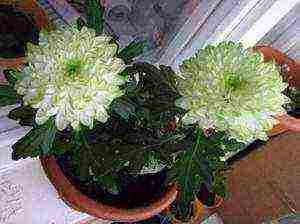 On especially hot days, chrysanthemums should be sprayed. Early morning or evening is best for this. Thanks to this procedure, the flower becomes fresher and much more attractive. But this procedure is still optional.
On especially hot days, chrysanthemums should be sprayed. Early morning or evening is best for this. Thanks to this procedure, the flower becomes fresher and much more attractive. But this procedure is still optional.
Transplanting, which is carried out once a year, also belongs to the components of the path behind the plant. Young plants are transplanted into larger containers. There is no need to do this procedure with adult plants, but if you have such a desire, then you can do this only once every two to three years.
For transplanting, you can use a substrate that is quite simple to prepare yourself. To do this, you will need:
- four parts of garden soil;
- four pieces of turf;
- one part of humus;
- one piece of white sand.
In order to increase flowering, you can add a little bird droppings to the soil. Chrysanthemum does not like acidic soils. Do not forget to spread the substrate on the bottom of the pot. And you should also pour over the soil mixture with boiling water, dry it, and only then will it be ready to "accept" the plant.
Fertilizers are another important part of gardening.... There are special complex dressings that contain all the necessary components. Potassium and phosphorus are especially important for chrysanthemums. They stimulate flowering. And also organic fertilizer works well on this flower. Various mineral solutions can also be added. For example, a mullein is poured into the root every four days. One part of the fertilizer is diluted with ten liters of water.
 Top dressing is not stopped until buds appear on the branches.
Top dressing is not stopped until buds appear on the branches.
In the fall, after flowering, the chrysanthemum should go into a state of dormancy, and the gardener's task is to help her with this. Shoots need to be cut, and the pot with the plant should be moved to the basement, where it will be in winter. The air temperature in the room must be kept at a level not lower than two degrees Celsius, so that wintering is painless for the chrysanthemum. But do not forget to take the flower from such storage.As soon as the first leaves begin to appear on it, you should start transplanting it into a pot that will be larger than the previous one and return it to your usual conditions.
Reproduction of chrysanthemums
Reproduction is another important point in growing and caring for globular chrysanthemums. Of course, this also applies to other varieties of this flower, and plants in general. There are several ways to propagate plants.
Plant propagation
The easiest way is propagation by cuttings. For domestic plants of thickets, young shoots are used that have not yet had time to lignify. You just need to cut a side branch about ten centimeters long. Remove the lower leaves and place in water. As soon as roots appear on them four or five centimeters long, you can start transplanting.
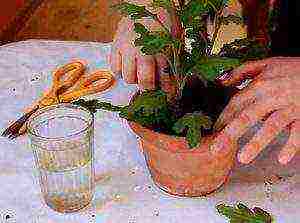 For this, several roots are taken, which must be planted in a separate pot, with a previously prepared drainage layer.
For this, several roots are taken, which must be planted in a separate pot, with a previously prepared drainage layer.
It is recommended to pinch the tops of the cuttingsso that the side shoots grow better, and the crown becomes more luxuriant. It is allowed to grow chrysanthemums from cuttings without root-growing operations. To do this, the cut shoot is immediately placed in open ground and simply covered with a jar to create a greenhouse effect. But do not forget that the cap must be removed every day. This is necessary so that the plant is ventilated and even at this time you can get rid of the formed condensation.
Dividing the bush
Quite an easy way to propagate plants. The most convenient way to do this is during the transplant. When you remove the bush from the pot, you should clean the root system of the soil. And then carefully, so as not to damage the roots and shoots, separate several parts from it. You need to be as careful as possible so as not to damage important parts of the plant.
The sections formed on the roots must be treated with crushed coal in order to avoid all kinds of infections. And the obtained seedlings are planted using the traditional method.
Growing from seeds
Korean varieties and various hybrids are best suited for seed propagation. Seeds are sown in shallow pots or containers, where a drainage layer and a substrate must be present, which must be fried at a temperature of at least 110 degrees. It should include peat and humus. Often, gardeners use ready-made soil as such a substrate, which can be purchased at a special store. But even it should be carefully handled.
 You do not need to cover the seeds with heaps of earth, just press lightly against the soil. After planting, they are lightly sprayed with a spray bottle and cover the container with a thick film or glass. Do not forget to look after the planted seeds. Make sure that they are always moist, remove condensation in time and be sure to ventilate. It is also advisable to remove accumulated condensation during ventilation. Storage of containers is carried out at a temperature not exceeding 25 degrees.
You do not need to cover the seeds with heaps of earth, just press lightly against the soil. After planting, they are lightly sprayed with a spray bottle and cover the container with a thick film or glass. Do not forget to look after the planted seeds. Make sure that they are always moist, remove condensation in time and be sure to ventilate. It is also advisable to remove accumulated condensation during ventilation. Storage of containers is carried out at a temperature not exceeding 25 degrees.
Within two weeks you will be able to observe the first shoots... As soon as this happens, the pots are transferred to a brighter place. But do not rush to rid them of the film. It is best to do this gradually, increasing the length of time they spend outdoors each day. This is a kind of preparation of young flowers for indoor life.
When four true leaves appear on young seedlings, you can safely transplant them into different pots. But it is important to be careful so that neither the shoot nor the root system is damaged. Special additives can help the flowers stimulate. The most popular for spraying: Zircon solution, as well as Epina-Extra. Such stimulation will accelerate the growth and development of the chrysanthemum.
The grown seedlings will feel good at temperatures from 16 to 18 degrees. After a while, pruning and other care components will already be needed.
Chrysanthemum diseases
For chrysanthemums, which are kept in poor conditions, there are three diseases that will adversely affect the plant:
- powdery mildew;
- septoria;
- gray rot.
Powdery mildew manifests itself, as in most cases: it is a white bloom that appears on leaves, shoots and petioles. The disease develops if you do not start fighting it in time. And this happens in the form of seals of this plaque, it changes color and becomes brown, and the flower itself is no longer considered decorative. Powdery mildew can be defeated with the help of various fungicidal preparations, which can be purchased at any flower shop.
Septoria is another fungal disease. It manifests itself in the form of gray-brown or rusty spots, which also have a yellow outline. Such spots appear on the leaves and gradually occupy their entire surface, and black dots can be observed in the center. The leaves that have been affected gradually dry out, and the shoots begin to weaken and bend.
If you find such manifestations on your flower, then immediately isolate it. Treat well with Cuproxat, and you can also use copper sulfate. All affected parts should be removed immediately. But do not rush to immediately return the flower to its place after processing. You need to wait a certain time to make sure that the disease has completely receded.
Gray rot is the most difficult to defeat. The disease manifests itself on terrestrial organs in the form of a fluffy plaque. It completely destroys flower tissue. Bordeaux liquid is considered the most effective remedy.
Dangerous pests
There are four types of pests that are especially dangerous for chrysanthemums:
- Aphids.
- Thrips.
- Chrysanthemum nematodes.
- Slobbering pennies.
All pests, except nematodes, are sucking insects that live on the plant and suck out cell sap from it. Now there are many drugs that easily and quickly relieve the gardener and plants from this problem.
Nematodes are worms and they live underground. That is why it is almost impossible to detect their presence. But over time, white spots appear on the leaves, which then turn brown. Then the affected leaf rolls up and simply falls off, and the spots move on to the next. To avoid this problem, do not ignore the recommendation regarding soil cultivation. It is impossible to save the plant. It is simply destroyed along with the soil in which it grew.
Types of domestic chrysanthemums
As already mentioned, the variety of varieties of these flowers is simply amazing. They can be grown outdoors and at home. There are dwarf and undersized chrysanthemums, various varieties of Indian, Chinese and Korean flowers. A very common type of multiflora is a bush chrysanthemum, which forms a ball during flowering. It is most often grown in pots. And there are also earlier and later varieties. The latter include the chrysanthemum "Anastasia pink". Its flowering begins only in October, and it can bloom only with the first snow.

For cultivation on the site, two varieties are used: ground chrysanthemum and Korean.
Chrysanthemum belongs to the Asteraceae family. The flowering period lasts from September to October. Leaves are sessile, green with a gray tinge, erect stems.
The height of the shrub can vary from 30 to 110 cm. The larger the shrub, the more flowers are formed on it, under favorable conditions it can grow up to 100 inflorescences with a double or semi-double surface. The rhizomes of the plant are branched, with root shoots, penetrate into the soil to a depth of 25 cm.
The inflorescence of the chrysanthemum is a basket, it contains a large number of individual flowers.
The diameter of the inflorescence ranges on average from 5 to 10 cm. The shape of the flowers can be varied: flat, pompous, anemone.The color has a wide palette, the petals can be lilac, orange, crimson, pink, red, white, orange. A pleasant light aroma emanates from the flowers.
Chrysanthemums are planted in group plantings, combining shrubs with flowers of different shades. Chrysanthemums complement those trees that change the color of their foliage with the change of season. You can also do group plantings with other perennial herbaceous plants or shrubs.
The most common types that are grown on sites:
- The crowned chrysanthemum has a simple stem, the height reaches 70 cm, although it may be less. Basal leaves do not stay on the plant for a long time. Inflorescences are single or collected in groups. Leaves of this type can be used for food.
- Chrysanthemum alpine low-growing plant, average height 15 cm. Leaves are collected in a rosette, single baskets, 3 cm in diameter. The flowering period lasts from July to August. This variety looks great on alpine slides, it is also grown in pots, borders.
- Chrysanthemum keeled is an annual species, it grows from 20 to 70 cm. The stem is erect, fleshy, the leaves are also dense. Inflorescences can be double and semi-double, have a pronounced aroma. The flowering period lasts from June to September, the flowering is abundant.
- Shrub chrysanthemum is a tall species, reaching 1 meter. Inflorescences are large, reach 5 cm in diameter, double or semi-double, can be located singly or in groups of 2-10 pieces. Flowers are tubular or ligulate.
- Chrysanthemum mulberry (Chinese) - bred artificially, this is a low-growing plant whose height ranges from 30 to 130 cm. The shoots are erect, lignify over time. Inflorescences can be simple, semi-double or double, reach an average of 6 cm in diameter, emit a pleasant light aroma.
- Korean chrysanthemums originated in a hybrid way. Flowers can reach a diameter of 15 cm, the maximum height of the shrub is 1 meter.
Hybrid varieties are easier to tolerate bad weather and temperature changes. They are less likely to encounter diseases and pests, and are distinguished by a long flowering period.
Growing chrysanthemums from seeds
Growing chrysanthemums from seeds does not require much time and special conditions. The plant is not whimsical and adapts well to environmental conditions. Not all types of chrysanthemums are grown from seeds, only some annual species, as well as Korean small-flowered representatives, are suitable. Other types of chrysanthemums can be obtained only by dividing the bush or by cuttings.
Sowing seeds of annual chrysanthemums can be done directly in open ground.
This is done in mid-May. Flowering occurs only in autumn, but if you want to see flowers as quickly as possible, then seedlings are planted, it quickly adapts to open ground and environmental conditions. The seeds of perennial chrysanthemums are sown at the end of January. If the winter turned out to be cold, then you can wait another month and sow chrysanthemums in February. The development of seedlings is slow, so if you plant a flower in the spring or later, then flowering will come only next year.
Soil for sowing seeds needs light, you can prepare it according to the following scheme:
- 1 part sand
- 1 part humus
- 2 pieces of leafy land
Expanded clay, gravel or other material that acts as drainage must be placed on the bottom of the seedling container. The seeds of annual species are planted to a depth of no more than 1 cm. If the chrysanthemum is Korean, then the seeds are laid out on the surface. The sprouts will appear in about 2 weeks; under favorable conditions, the period may be reduced.
While the seedlings are in containers, the ambient temperature should be within 18 degrees. The soil must be constantly moist, for this it is periodically sprayed from a spray bottle, preventing it from drying out.The water for spraying is warm and settled. When several full-fledged leaves appear, the plants dive into separate containers.
Seedlings are transplanted into open ground in early June, and if the weather permits, then a little earlier.
An open, sunny place is chosen on the site. Groundwater should not pass close to the surface, chrysanthemums do not like stagnant water. The soil should be light and fertile. In the fall, chrysanthemums are dug up and stored until spring in a cool room. This is done only in the first year while the plants have not yet matured. Further, no shelter is required for the winter, especially if the winter is mild.
Planting chrysanthemums in open ground
It is very easy to grow chrysanthemums outdoors, but this does not mean that it does not require special conditions:
- The most important thing is to choose a sunny area.
- In addition, the plant should not be affected by wind and drafts, so it is advisable that the flowers be blocked by a fence or a house.
- For chrysanthemums, you need to find a flat area. This is due to the spring period, if the flowers are planted in the lowlands, that is, there is a great risk that during the melting of the snow, the water will drain and flood the plants. The same goes for rainy weather, a large amount of water can lead to the death of plants.
- The ideal option for chrysanthemums is a place near hedges, it will let light through for flowers and protect from bad weather.
The flowering period of most varieties falls in the fall, so the light regime should be as natural as possible. If you make changes, then the petals of the flower can change their structure, the stem becomes less durable, the decorative effect of the flower is significantly reduced.
If there is not enough sun for the flower, only flower buds will form. If the daylight hours are increased, then axillary buds, leaves and stems will be laid. That is, for the normal life of a plant, it needs an ordinary daylight hours so that all processes go on as usual.
If it is necessary for the chrysanthemum to bloom a little earlier, then during the formation of buds, the plant is covered from the sun. Then flowering can start 2 weeks earlier.
The Korean variety is the most hardy among the rest.
After winter, it begins to actively develop at temperatures from 2 degrees Celsius. If autumn began early and the first frosts fell during the flowering period, then this is not a big deal, the chrysanthemum is able to withstand temperatures down to -10 degrees. If during the autumn frosts the plant froze, then after a while it can thaw and continue to bloom.
Chrysanthemum tolerates heat harder than cold. On summer days, generative organs are laid, so the plant may underdevelop. In open ground, chrysanthemums are planted at the very beginning of summer or at the end of May. You need to focus on the temperature of the soil, it should have time to warm up to 14 degrees, you need to check the temperature at a depth of at least 20 cm.
Watering chrysanthemums:
- Be sure to water the plants after planting, it is especially important to do this in July.
- If there is a lack of moisture, especially in sunny, dry weather, flower buds may not form. It is from them that inflorescences will grow in the future.
- If the soil does not have time to dry out due to the large amount of precipitation, then there is no need to water the plant.
- With an excess of moisture, the plant will not feel bad, but the more juicy the shoots are, the greater the risk that they will freeze during autumn frosts.
Do not forget to moisten the soil in the first weeks after planting seedlings or cuttings that have not yet been rooted. The soil should be fertile, preferably loamy, with an acidity of 6.5. Loamy soil retains heat well and can protect the flower during cold weather.
To grow chrysanthemums on sandy soil, peat and humus will need to be added to it during digging.If the plants get into the garden of their greenhouse, then it is better to store them indoors for the winter as well.
Planting indoor chrysanthemums
Chrysanthemums are often grown indoors. In order for chrysanthemums not only to actively develop, but also to bloom in a pot, it is necessary to select good soil.
You can purchase a special composition in the store, or you can cook it yourself, for this, the following components are used:
- Garden arable land
- Coarse sand
- Granular peat
- Bone flour
If you take a bucket of soil, then bone meal will need a small pot, about 7 cm in size. The pot is not completely filled with compost, 1/3 of the container is not poured. A sprout is placed in the mixture. It is installed so that the roots are on the surface, after which the remaining compost is filled up. You do not need to press down firmly on the ground after planting, so as not to damage the roots. Also, several plants should not be close to each other.
At the initial stage of cultivation, the soil is moistened with a spray bottle, it should not have time to dry out.
The sprouts must immediately be provided with bright sunlight. The optimum temperature at night is up to 10 degrees Celsius. Within a month, the root system should completely fill the pot. After that, the young plant is transplanted into a larger pot. For adult plants, a slightly different soil composition will be required, it will include the following components:
- 1 part sand
- 1 part peat
- 3 parts garden soil
- 0.5 parts dry manure
- Handful of bone meal
Watering is carried out the day before the chrysanthemum is transplanted into a new pot and immediately after. Until the stems of the plant have grown stronger, they will need support. It is not necessary to repot the plant anymore, only if the roots have made their way to the surface of the earth.
Chrysanthemums are not only able to decorate any interior. They are prized for the ability to grow them for cutting. For the latter, annual species are used, in particular keeled chrysanthemum. In order for potted chrysanthemums to develop more actively, various stimulating biological products can be used. They activate the growth of dormant buds, after which the crown becomes denser, and more buds are formed.
The following drugs are used:
- Planta Miracle-Growth
- Bud
- Epin
- Zircon
It has been experimentally proven that the use of a light solution of potassium humate leads to an acceleration of plant development, an increase in the volume of the root system, an increase in the size of buds and the general decorative effect of plants.
Reproduction, caring for chrysanthemums and possible problems
Chrysanthemums can be propagated in several ways:
- Rhizome division
- By cuttings
Each method has its own characteristics, advantages and disadvantages. The division of the bush is done immediately after winter. It is necessary to have time to do this before young shoots appear. In the evening, the shrub is dug out of the ground, and the rhizome is divided into several parts. These parts are treated with a solution of potassium permanganate and planted on the site.
The plot is chosen sunny, a distance of 50 cm is kept between the shrubs. Watering is carried out in a thin stream right at the root. In autumn, a part of the shrubbery bends over and is buried in the ground. To keep the branch well, staples are used. In the spring, a new shoot with its own root system will begin to grow from this place. In May, the soil is harvested and a new shoot is cut off. It can be left in the same place or transplanted to a new one.
The easiest way to propagate chrysanthemum by cuttings. In addition, it is guaranteed that you will get the same beautiful bush as an adult. The procedure is carried out in the spring and summer.
Chrysanthemum cuttings:
- After the threat of frost has passed and the ground has thawed at a depth of 30 cm, suitable mother bushes are selected, the life of which is more than 1 year.
- Flowers can be fed before breeding.
- When the ambient temperature reaches +18 degrees, you can see that new shoots with matte leaves appear on the shrub. These shoots will be used for propagation and are pruned when they are no more than 25 cm in length.
- In order for rooting to occur successfully, a plot of land with rich loosened soil is prepared, shading is done.
- There should be a distance of 20 cm between the cuttings.
The first month you need to carefully monitor the soil moisture, otherwise the roots will not form. At first it may seem that the cuttings are withering, but when the root system is formed, they will come to life and begin to actively grow.
Young chrysanthemums need feeding every 2 weeks, if the weather is unfavorable or the soil is poor, then fertilization can be applied every week.
If a large number of buds or peduncles have formed, then it is advisable to remove the smallest and weakest ones. Then the rest will be larger and brighter.
The most common diseases and pests of chrysanthemums:
- Gray rot
- Powdery mildew
- Leaf rust
- Root bacterial cancer
- Leaf spot
- Aphid
- Meadow bug
- Chrysanthemum nematode
Most of the problems arise from improper care of the chrysanthemum, in particular, insufficient or excessive watering. High humidity can lead to diseases.
Chrysanthemum is an unpretentious plant, however, certain conditions must be observed to obtain a lush shrub. Nutritious soil and bright light are the main factors for large, bright flowers.

